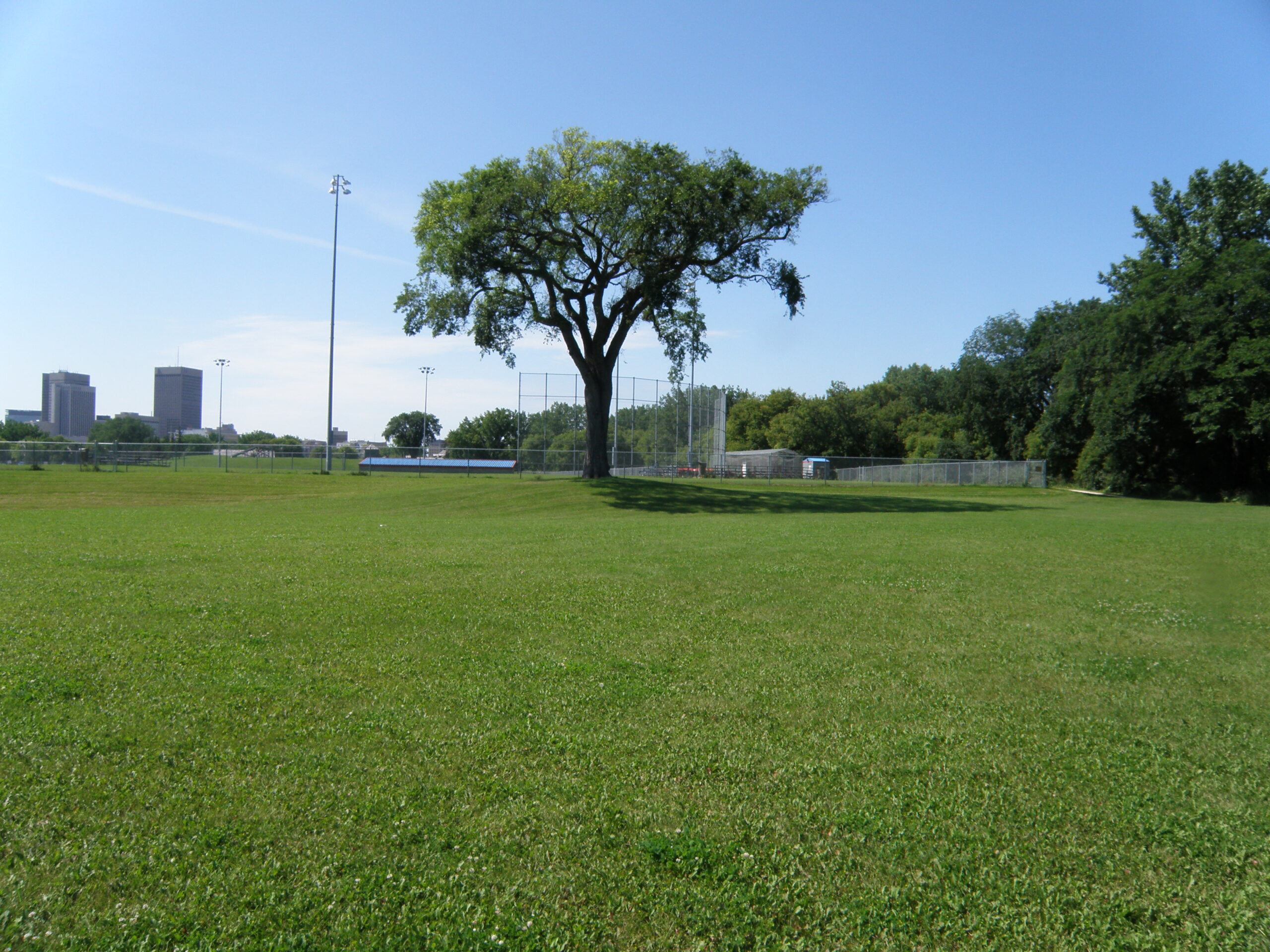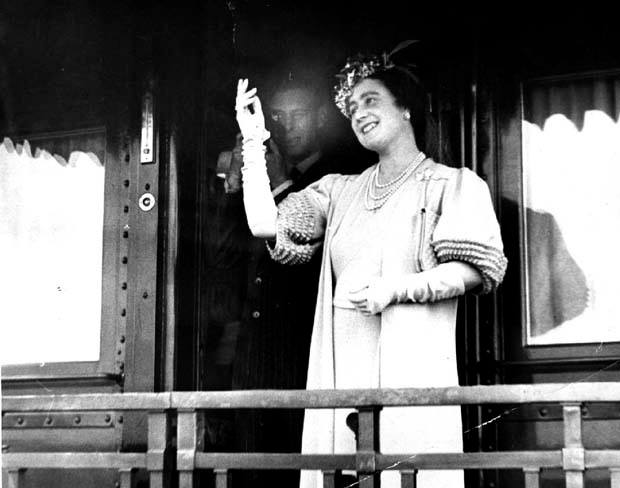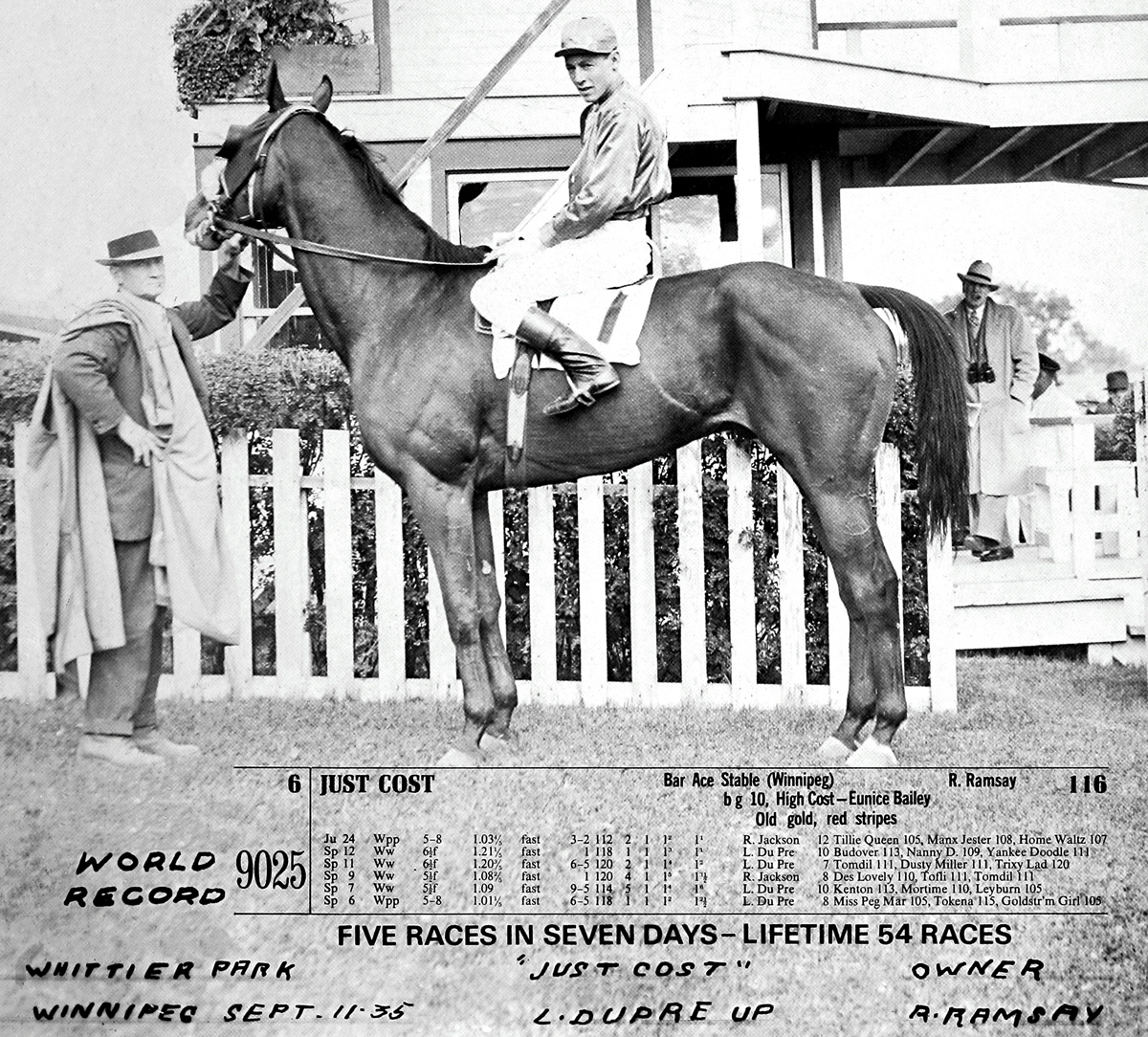by Track Historian Bob Gates
Tucked away between the Red River and the CNR main line embankment in St. Boniface lies a recreational green space called Whittier Park. However, Father Time and the flood of 1950 have erased any evidence of the old racetrack.
The only visible survivor from the track that was opened in 1924 is the 250-year-old American elm that was located in the infield at the top of the home stretch. This June 24th will mark the 100th anniversary of Whittier Park racetrack’s opening and in these parts that’s something special. Whittier Park was in operation from 1924 until 1942, when wartime rationing resulted in restricted transportation access to the track.

Whittier Park tree still standing
The 1942 season was Whittier’s last hoorah. Most believed racing would return, but the raging flood waters dashed those dreams. The facilities at Whittier were irreparably damaged and were demolished in 1951. For a time Whitter was used to stable horses and as a training track, but by 1957 the horses were gone.

1950 flood waters are final blow for Whittier Park
When Whittier Park opened in 1924 society was still in the midst of the “Roaring Twenties,” the world had not fully recovered from the Great War and the Great Depression was on the horizon. Rosa Hoot’s Black Gold won the 50th Running of the Kentucky Derby that year. It was the first time in history that a woman owned and bred a Derby winner. In Canada, Maternal Pride won the 65th Running of the King’s Plate paying a Plate record $193.35 for a $2 win ticket.
Whittier Park Racetrack History
On July 27, 1931, Whittier Park’s existence was threatened when a fire swept through the stable area. In the end, six quality race horses perished and two barns were destroyed. However the barns were replaced, and Whittier Park was ready for the opening of the fall meet on August 29, 1931.
In 1939 R. James Speers flew to Toronto to see a demonstration of Mark Cowell’s self-enclosed starting gate. The “invention” was controversial and a radical departure from the traditional start. However, Speers was impressed and contracted to purchase the gate for Whittier Park’s spring meet which was to start June 2, 1939.
King George Vl and his wife, Queen Elizabeth were given a gala farewell in 1939 following their royal visit to Winnipeg. On Sunday June 4, 1939 merely three months before the start of World War ll, Whittier Park played host to a the huge “Farewell – Your Majesties” party.

Royal Visit 1939 Whittier Park
The event was billed as the last chance for Winnipeggers to see the royals who were leaving Winnipeg by train. Organizers of the event boasted that there would be no better vantage point to view the royals as the blue and silver train travelled along the high embankment adjacent to the track and in full view of all who would fill the infield, grandstand, and clubhouse of Whittier Park.
Newspaper accounts reported that the King seemed impressed enough with the throng that he was seen taking shots of the crowd with his movie camera. While no official attendance records exist, the crowd estimated at 18,000 was the largest to ever attend Whittier Park racetrack.
Of all the historic events that took place at Whittier Park none were more memorable than the record-setting Daily Double payoff on June 9, 1942. Mr. Mike Markowich was the only person to hold a winning daily double ticket on the number combination of 10 (Pagan Royal) and 4 (Mesmerist) and took the entire pool of $4,835.55 for his two-dollar investment. There are no official records kept on mutuel payoffs, but it has long been believed that Whittier Park’s daily double was and still is a Canadian record.

Just Cost
Noted sports columnists Jim Coleman and Herb Manning both wrote about a Whittier Park urban legend. It was said that a crow would perch himself in the Whittier Park tree every morning during racing season. He would oversee the workouts and if he was moved by a “bullet” work, he would flap his wings and caw with great delight. The story goes that after racing ended at Whittier Park the crow was never seen again. Myth or legend? That’s for you to decide.
You owe it to yourself to return to Whittier Park before the snow flies. Position yourself near the elm tree and go to that special place in your mind, where no one else is allowed, and summon the memories of “Slim” Keith and Contributor, Andy Robison and Sunny Marcus and “Spud” Murphy and old Joe Geary. If you’re lucky something magical might happen, if you let it.
And maybe, just maybe you’ll be transported to another time, where the imagination rules and you can sense the spirits from the past. For this is hallowed ground, where horse racing from 100 years ago is all about the hoofprints and footprints…
of old Whittier Park.

